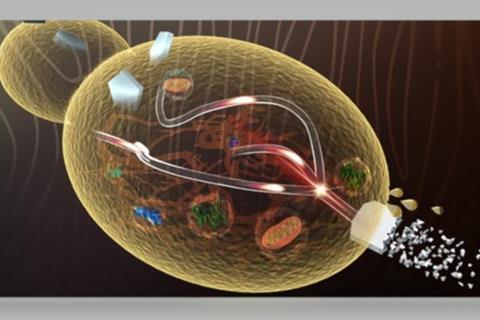Lignocellulosic biomass is a renewable feedstock for 2nd-generation biomanufacturing. In particular, efficient co-fermentation of mixed glucose and xylose in lignocellulosic hydrolysates is a key issue in reducing product costs.

However, co-utilization of xylose and glucose in microbes is challenging due to limited xylose assimilation and the glucose repression effect.
Recently, a research group led by Prof. Zhou Yongjin from the Dalian Institute of Chemical Physics (DICP) of the Chinese Academy of Sciences (CAS) has proposed a microbial platform for lignocellulose bio-refinery.
Efficient synthesis
It can efficiently synthesize acetyl-CoA derivatives, such as fatty acids (FFA) and 3-hydroxypropionic acid (3-HP), owing to the enhanced supply of precursor acetyl-CoA and cofactor NADPH by rewiring the cellular metabolism of Ogataea (Hansenula) polymorpha.
This study was published in Nature Chemical Biology on Aug. 24.
The researchers realized co-utilization of glucose and xylose by introducing a hexose transporter mutant and xylose isomerase, and overexpressing the native xylulokinase to enhance xylose catabolism and import.
The engineered strain produced 7.0 g/L FFA from real lignocellulosic hydrolysates in shake flasks and 38.2 g/L FFA from simulated lignocellulose in a bioreactor. Furthermore, this superior cell factory was expanded for 3-HP production by a metabolic transforming strategy, obtaining the highest 3-HP titer of 79.6 g/L from simulated lignocellulose.
“Our work realized co-utilization of xylose and glucose without compromising native glucose metabolism and demonstrated the potential of O. polymorpha as a cell factory to produce versatile value-added chemicals from lignocellulose,” said Prof. Zhou.







No comments yet